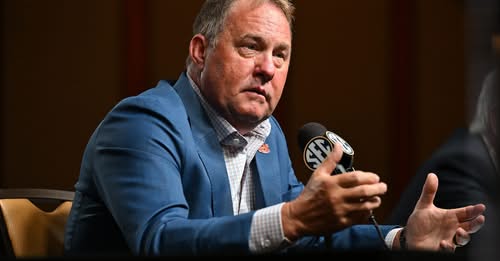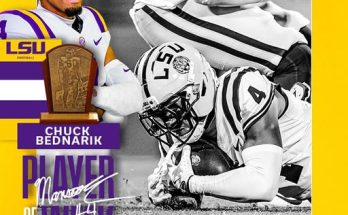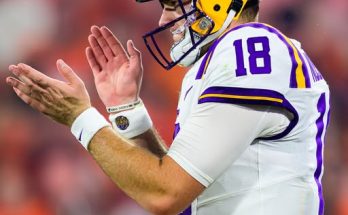The conversation surrounding Name, Image, and Likeness (NIL) in college football continues to evolve, but with this evolution comes new challenges, frustrations, and unintended consequences. One of the most vocal critics of the NIL-era trend is college football analyst Jeff Goodman, who recently stirred debate with a simple but powerful point: many players are becoming wealthy based on potential rather than proven accomplishments. This statement, while provocative, touches on a much deeper issue about the nature of college sports, the role of money, and the delicate balance between opportunity and meritocracy.
To understand the gravity of this shift, it’s essential to first look back and appreciate how college football functioned before the NIL era. For decades, student-athletes were viewed as amateurs—playing for the love of the game, for school pride, and perhaps for a shot at the professional level. Compensation came in the form of scholarships, education, and limited stipends. While the system was far from perfect—and often exploitative, given the billions in revenue generated by college athletics—it maintained a clear distinction between amateurism and professionalism. NIL has blurred that line entirely.
The introduction of NIL rights allowed college athletes to monetize their personal brands, a long-overdue correction in the eyes of many. After all, why shouldn’t a star quarterback be able to earn money through endorsements, autographs, or social media just like any other public figure? But what has emerged is a marketplace where raw potential is now the hottest commodity—sometimes even more valuable than on-field performance. Recruits who have never played a down of college football are landing six- and seven-figure deals. High school athletes are now making more than some of their professional counterparts in lower-tier leagues. This dramatic shift in financial dynamics is where Goodman’s concern becomes most relevant.
In theory, NIL is supposed to reward athletes for their talent, their marketability, and their accomplishments. But in practice, it’s created a speculative economy not unlike Wall Street’s investment in startups. The problem is that in college football, the investment is not in companies or products—it’s in teenagers. Boosters, collectives, and even some universities are placing massive financial bets on young athletes based on star ratings, highlight reels, and promise. The result? A wave of contracts and payments that often bear no correlation to actual performance.
One major concern is how this impacts the athlete psychologically. Imagine being 17 years old and receiving a \$1 million NIL package before even stepping onto campus. That type of financial windfall can drastically alter a young person’s mindset, motivation, and sense of purpose. Without proper guidance, mentorship, and financial education, many of these athletes may struggle to manage not only their money but also the expectations that come with it. It’s one thing to be a highly-rated recruit; it’s another to live up to the price tag attached to your name.
Furthermore, the locker room dynamics are shifting. In the past, upperclassmen were the leaders—players who had earned their stripes, who had been through the grind, and who could command respect because of what they had achieved on the field. Now, the freshman with the \$500,000 NIL deal may walk into that same locker room with more fame, more money, and more attention than the senior captain. This inversion of the traditional hierarchy can create resentment, jealousy, and fractured team chemistry. Coaches are now faced with the additional challenge of managing egos, envy, and entitlement in ways they never had to before.
The recruiting landscape has also been fundamentally transformed. NIL has, in many ways, replaced tradition, culture, and development as the main selling points for many programs. It’s no longer just about the prestige of playing for Alabama, Georgia, or Ohio State. Now, it’s about which school can offer the most lucrative NIL opportunities. This has created a quasi-free agency system where top high school players and transfer portal entrants are essentially shopping their talents to the highest bidder. The result is a recruiting arms race that disproportionately benefits the programs with the deepest pockets and the most aggressive collectives.
But here’s where the problem becomes even more profound. When athletes are rewarded more for their potential than their accomplishments, the message being sent is that hype matters more than hard work. It’s a dangerous precedent to set, especially in a developmental environment like college football. The sport has always been about growth—physical, mental, emotional. It’s about turning raw talent into refined excellence. Yet now, some players may lose the incentive to push themselves, knowing they’ve already secured financial success before achieving anything substantial on the field.
Another issue lies in the inconsistent and often opaque regulations governing NIL. Because there’s no uniform national standard, NIL rules vary by state, and enforcement is largely toothless. Some schools play within the spirit of the law; others use NIL as a thinly-veiled pay-for-play system. The NCAA, notoriously slow and reactive, has failed to provide meaningful oversight, which has led to a wild west atmosphere. It’s not just about what’s allowed—it’s about what schools can get away with. And in that vacuum of governance, boosters and third-party collectives have seized power, becoming major players in the decision-making process for top recruits and transfers.
There’s also the question of fairness. Not all players are benefiting equally from the NIL gold rush. The majority of NIL money flows to quarterbacks, skill-position stars, and elite recruits. Linemen, role players, and even starters at less marketable positions are often left out of the payday bonanza. This creates an economic imbalance within the team, where players are theoretically equal under the scholarship system but wildly unequal under NIL. It’s not just a matter of who gets paid—it’s a matter of how much and why.
And for the fans, this new reality can be disorienting. The romanticism of college football—rooted in tradition, pageantry, and the idea of playing for love of the game—is slowly eroding. Instead, fans are now witnessing a version of the sport that resembles the NFL in many ways, but without the same level of maturity, structure, or accountability. Loyalty is thinning. Players now transfer multiple times with few consequences. Commitments mean less. The transfer portal and NIL have combined to create a transient culture, where athletes chase the next payday or starting opportunity with little regard for building something lasting.
This is not to say that NIL is inherently bad or that athletes shouldn’t profit from their brand. On the contrary, NIL rights are a necessary evolution—correcting decades of unjust restrictions. But the execution and implementation have left much to be desired. The lack of guardrails, combined with the speculative nature of athlete evaluation, has turned NIL from a tool of empowerment into a system that rewards promise more than performance.
To fix these issues, several steps must be considered. First, there needs to be national NIL legislation that creates consistency across states and schools. A universal framework would help level the playing field and reduce exploitation. Second, financial literacy and mentorship programs must be mandatory for athletes receiving NIL compensation. Teaching them how to manage money, build a brand responsibly, and prepare for long-term success should be as important as weight training or film study.
Third, transparency must improve. Schools, collectives, and athletes should be required to disclose NIL agreements in a centralized system. This would help weed out bad actors, prevent under-the-table deals, and ensure that NIL remains tied to actual commercial value rather than being a guise for recruiting inducements. Fourth, there should be some form of graduated NIL structure—where larger payments are tied to achievements, such as academic milestones, community service, or performance metrics. This could reintroduce the concept of earning, rather than expecting, financial rewards.
Coaches and athletic departments also need to reassert their role in shaping team culture. It’s vital that NIL doesn’t overshadow the principles of hard work, discipline, and respect that define championship programs. Leaders must find new ways to align individual success with team success, ensuring that wealth doesn’t replace the desire for winning or diminish the value of accountability.
Finally, the NCAA must either evolve or step aside. Its lack of urgency has turned NIL into an unregulated experiment, and its failure to lead has left schools to fend for themselves. Whether through partnerships with Congress, third-party agencies, or a complete overhaul of its governance model, the NCAA must stop dragging its feet and start creating solutions that safeguard both the athletes and the integrity of the sport.
Ultimately, Jeff Goodman’s warning should not be dismissed as a critique of athletes but rather as a critique of the system we’ve created. It’s not the players’ fault that they’re cashing in on opportunities—anyone in their position would likely do the same. The issue is that we’ve allowed NIL to morph into something that prioritizes hype over substance. If college football is to preserve what makes it special while embracing the future, then we must recalibrate the balance between potential and performance.
College football has always been a developmental sport. It has produced legends not because they arrived ready-made, but because they put in the work. NIL can coexist with that spirit, but only if it rewards achievement, not just expectation. Let us not forget that the game, at its best, is about more than money—it’s about the journey, the team, and the pursuit of greatness earned, not given.



